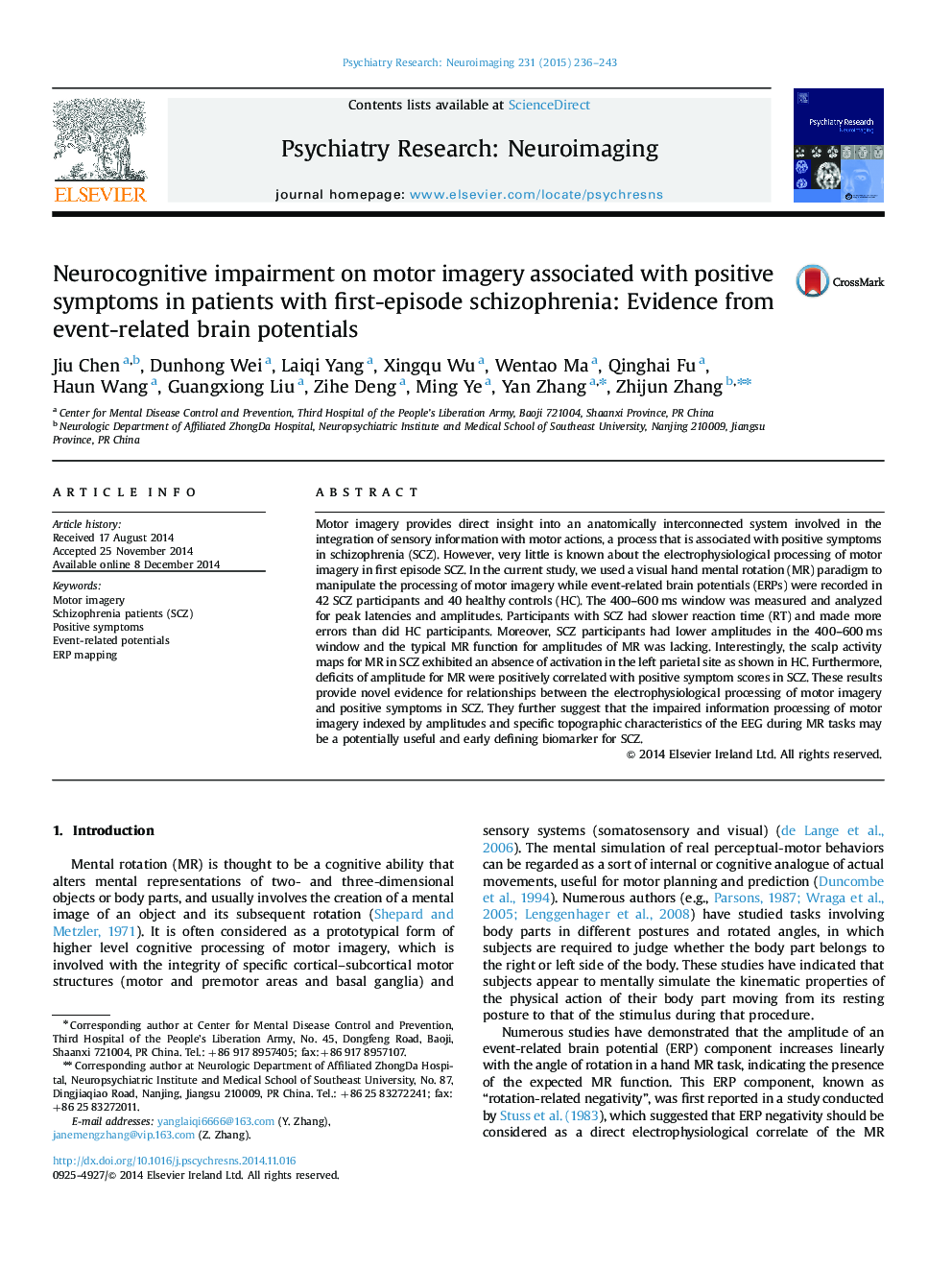| Article ID | Journal | Published Year | Pages | File Type |
|---|---|---|---|---|
| 10305662 | Psychiatry Research: Neuroimaging | 2015 | 8 Pages |
Abstract
Motor imagery provides direct insight into an anatomically interconnected system involved in the integration of sensory information with motor actions, a process that is associated with positive symptoms in schizophrenia (SCZ). However, very little is known about the electrophysiological processing of motor imagery in first episode SCZ. In the current study, we used a visual hand mental rotation (MR) paradigm to manipulate the processing of motor imagery while event-related brain potentials (ERPs) were recorded in 42 SCZ participants and 40 healthy controls (HC). The 400-600Â ms window was measured and analyzed for peak latencies and amplitudes. Participants with SCZ had slower reaction time (RT) and made more errors than did HC participants. Moreover, SCZ participants had lower amplitudes in the 400-600Â ms window and the typical MR function for amplitudes of MR was lacking. Interestingly, the scalp activity maps for MR in SCZ exhibited an absence of activation in the left parietal site as shown in HC. Furthermore, deficits of amplitude for MR were positively correlated with positive symptom scores in SCZ. These results provide novel evidence for relationships between the electrophysiological processing of motor imagery and positive symptoms in SCZ. They further suggest that the impaired information processing of motor imagery indexed by amplitudes and specific topographic characteristics of the EEG during MR tasks may be a potentially useful and early defining biomarker for SCZ.
Related Topics
Life Sciences
Neuroscience
Biological Psychiatry
Authors
Jiu Chen, Dunhong Wei, Laiqi Yang, Xingqu Wu, Wentao Ma, Qinghai Fu, Haun Wang, Guangxiong Liu, Zihe Deng, Ming Ye, Yan Zhang, Zhijun Zhang,
